
Marquess of Aberdeen and Temair, in the County of Aberdeen, in the County of Meath and in the County of Argyll, is a title in the Peerage of the United Kingdom. It was created on 4 January 1916 for John Hamilton-Gordon, 7th Earl of Aberdeen.

Fraserburgh, locally known as the Broch, is a town in Aberdeenshire, Scotland, with a population recorded in the 2011 Census as 13,100. It lies in Buchan in the northeastern corner of the county, about 40 miles (64 km) north of Aberdeen and 17 miles (27 km) north of Peterhead. It is the biggest shellfish port in Scotland and one of the largest in Europe, landing over 5,450 tonnes in 2016. Fraserburgh is also a major port for white and pelagic fish.
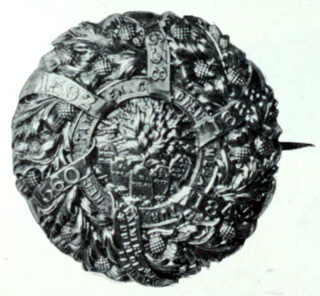
The Disruption of 1843, also known as the Great Disruption, was a schism in 1843 in which 450 evangelical ministers broke away from the Church of Scotland to form the Free Church of Scotland. The main conflict was over whether the Church of Scotland or the British Government had the power to control clerical positions and benefits. The Disruption came at the end of a bitter conflict within the Church of Scotland, and had major effects in the church and upon Scottish civic life.
William McCombie MP, was a leading Scottish cattle breeder and agriculturist; he was also known as "the grazier king" or the "king of graziers".

Clan Gordon is a Highland Scottish clan, historically one of the most powerful Scottish clans. The Gordon lands once spanned a large territory across the Highlands. Presently, Gordon is seated at Aboyne Castle, Aberdeenshire. The Chief of the clan is the Earl of Huntly, later the Marquess of Huntly.

Garioch is one of six committee areas in Aberdeenshire, Scotland. It has a population of 46,254, which gives it the largest population of Aberdeenshire's six committee areas. The Garioch consists primarily of the district drained by the River Ury and its tributaries the Shevock and the Gadie Burn.

The House of Burnett is a Lowland and Border Scottish family composed of several branches. The Chief of the Name and Arms of Burnett is James Comyn Amherst Burnett of Leys.

There has been a human presence in the area of Aberdeen since the Stone Age. Aberdeen as a city, grew up as two separate burghs: Old Aberdeen, the university and cathedral settlement, at the mouth of the River Don; and New Aberdeen, a fishing and trading settlement where the Denburn entered the Dee estuary.

Sheldon stone circle is a prehistoric stone circle located to the south of Oldmeldrum in Aberdeenshire, Scotland.
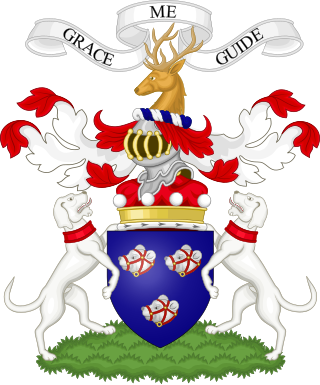
Clan Forbes is a Highland Scottish clan from Aberdeenshire, Scotland.

John Campbell Hamilton-Gordon, 1st Marquess of Aberdeen and Temair, was a British politician. Born in Edinburgh, Aberdeen held office in several countries, serving twice as Lord Lieutenant of Ireland and serving from 1893 to 1898 as Governor General of Canada.

Pitcaple is a hamlet in Aberdeenshire, Scotland on the River Urie 4 miles (6 km) northwest of Inverurie.

Clan Cumming, historically known as Clan Comyn, is a Scottish clan from the central Highlands that played a major role in the history of 13th-century Scotland and in the Wars of Scottish Independence. The Clan Comyn was once the most powerful family in 13th-century Scotland, until they were defeated in civil war by their rival to the Scottish throne, Robert the Bruce.
William Smith was a Scottish architect. He was a son of John Smith, also an architect, and his mother was Margaret Grant. A partner in the Aberdonian firms J & W Smith (1845–1879), W & J Smith (1879–1887) and W & J Smith and Kelly (1887–1891), and employed as Aberdeen's superintendent of works (1852–1891), he designed a large number of buildings in north east Scotland.
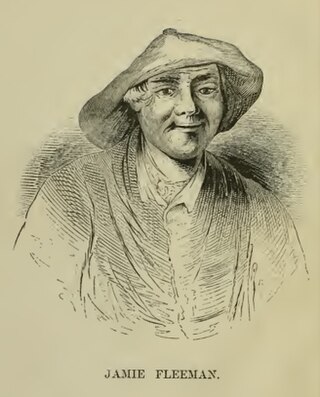
Jamie Fleeman or Fleeming (1713–1778) was better known as "the Laird of Udny's Fool" or "the Laird of Udny's Fule" in the Scots language. Although described as a fool, he had a reputation for his clever, witty repartee and many anecdotal tales of his actions are re-capped. He was specifically mentioned in the 1845 Statistical Accounts of Scotland and characterised in novels. Fleeman is associated with the Countess of Erroll and was used by her to carry messages to Jacobite rebels. He was probably the last family jester in Scotland.
Events from the year 1871 in Scotland.
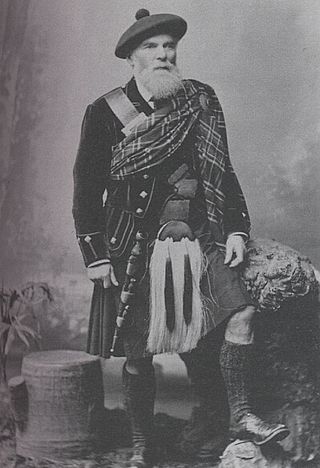
John Murdoch was a Scottish newspaper owner and editor and land reform campaigner who played a significant part in the campaign for crofters rights in the late 19th century.

Alexander Thomson of Banchory FRSE (1798–1868) was a 19th-century Scottish advocate, agriculturalist, antiquary, author, philanthropist and traveller. He owned an estate at Banchory-Devenick in Aberdeenshire. After qualifying as an advocate in Edinburgh he returned to the estate and did not pursue a career at the bar preferring to follow the life of a country gentleman. He travelled extensively in Europe, spending many years studying overseas. He settled crofters on his estate and planted many trees. His position in life allowed to give time to many interests including antiquarian studies, geology, biology and social reform. He attempted to unite Marischal and King's Colleges in Aberdeen University. At the Dirsuption he sided with the Free Church and was a prominent leader in that cause. He died in 1868 and bequeathed a sizeable museum and collection of books to the church. He also gave a substantial amount of money to set up a Free Church College in Aberdeen.
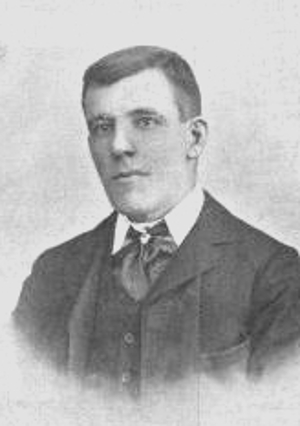
John Malcolm Bulloch (1867–1938) was a Scottish journalist and magazine editor, known also as a genealogist, and a literary and theatre critic.


















